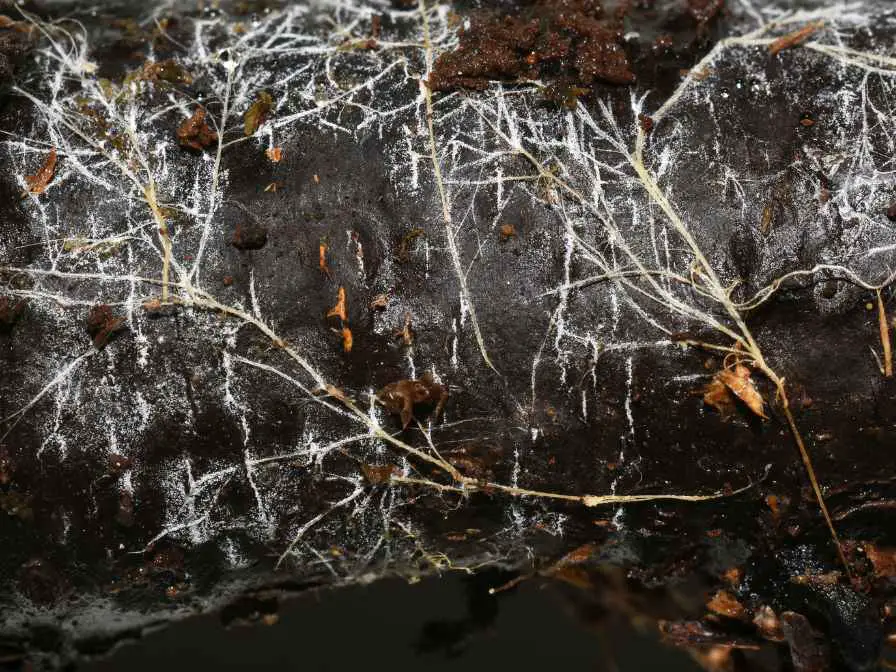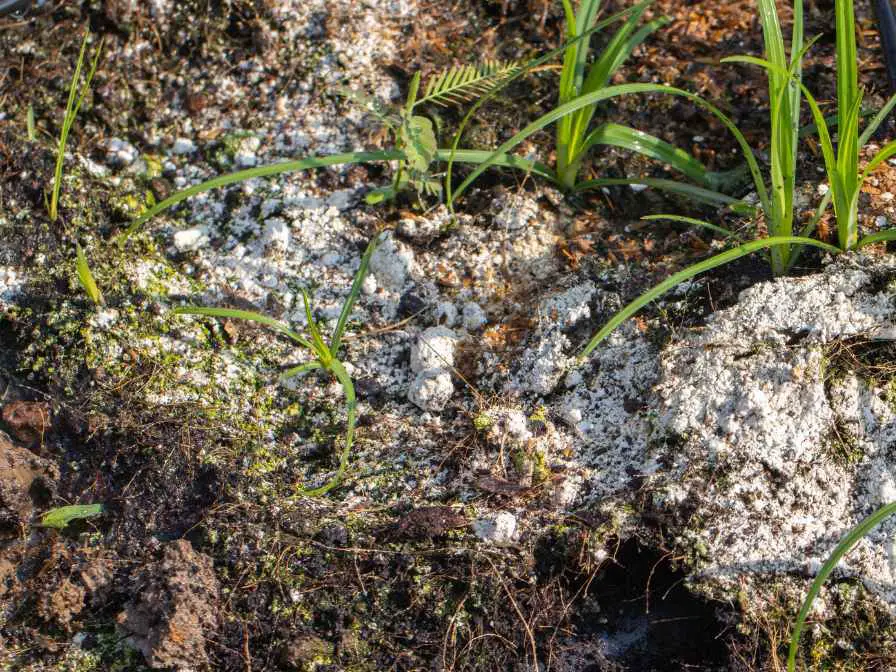Gardeners and homesteaders go for gardening, but they come across many problems such as pests and diseases. One such common disease is mold on plant soil. All of us wish to know how to get rid of it. Well, we are going to ease your tension regarding that problem.

What is mold on plant soil?
Mold on plant soil refers to the growth of a type of fungus on the surface of soil that is used for growing plants. It can appear as a fuzzy, white, gray, or black growth on the surface of the soil. This can be caused by a variety of different types of mold.
Mold on plant soil can be a common problem for indoor plants, particularly if the plants are kept in a warm, moist environment. It can be caused by overwatering or poor drainage, as well as by high humidity levels or insufficient air circulation around the plants.
While mold on plant soil is generally not harmful to plants, it can be unsightly and may indicate that the soil is not properly cared for. To prevent mold, it is important to ensure that the soil is not too moist and that there is good air circulation around the plants.
If mold does appear on the soil, it can be removed by gently scraping it off with a spoon or fork, or by adding a layer of fresh soil to the top of the pot. But you can go for the permanent solution that will avoid any further mold on the plant soil.
Effects of Soil Mold
Mold on plant soil can have a number of negative effects on your plants. It causes your energy, efforts, money, and time invested to go in vain. So be sure to look out for it. Here are some of the potential damages:
Mold growth can create a barrier that prevents your plant from absorbing nutrients from the soil, leading to nutrient deficiencies and stunted growth. Excessive moisture and poor drainage caused by mold growth can lead to root rot, which can ultimately kill your plant.
Some types of mold can spread diseases that can harm your plants, such as damping off, which causes seedlings to wilt and die. Mold growth can attract pests such as fungus gnats and other insects that can harm your plants.
Some types of mold can release spores that can be harmful to humans and pets, especially those with allergies or respiratory issues.
Symptoms of Mold on the Plant Soil
Mold on plant soil can manifest in a variety of ways, and the symptoms can vary depending on the type of mold and the plant species. You should have a look at it. However, some common symptoms of mold on plant soil include:
– Fuzzy, white, gray, or black growth on the surface of the soil
– Musty or earthy odor emanating from the soil
– Dampness or moisture on the surface of the soil
– Wilting or yellowing of plant leaves
– Stunted growth or poor plant health
– Leaf drop or premature death of the plant
If you notice any of these symptoms in your plants, it is important to investigate the cause and take action to prevent further mold growth. It may also be helpful to isolate affected plants to prevent the spread of mold to other plants.
All these symptoms will give you the hint that there is a mold to start. It is important to note because here you will set the pace of the plant growth. If you would be able to get hold of it at the initial stage, you will surely save the plant easily.
How to get rid of mold on the Plant Soil

Mold on the plant soil is one of the common problems. now you know the mold, its appearance, and how it can damage plants. Here are the common and effective methods that you can adopt to get rid of mold from the plant soil.
Improve the air circulation
Mold thrives in damp and poorly ventilated environments. Increasing air circulation by placing a fan near the plant can help dry out the soil and discourage mold growth. Or if the plant is at a congested place where other plants or any other hindrance is there you can go for lighting it.
Water less frequently
Overwatering can create the damp environment that mold loves. Let the soil dry out a bit between watering to help prevent mold growth. Just make sure that you water the plant according to the need of the plant. Not that you water it again and again.
Remove Moldy soil
If the mold is concentrated in one area of the soil, you can try to remove it by scooping out the affected soil and disposing of it. Be sure to also remove any dead plant material from the soil. It will reduce the possibility of increasing mold in the soil.
Apply an antifungal agent
There are several natural antifungal agents you can use to help prevent mold growth, such as cinnamon, neem oil, or hydrogen peroxide. Mix these agents with water and apply them to the soil according to the product’s instructions.
Use a commercial fungicide:
If the mold growth is severe or persistent, you may need to use a commercial fungicide. Be sure to follow the product’s instructions carefully and use it in a well-ventilated area. Use proper machines, and follow the warnings as well.
Remember to also keep your plant in a location with adequate sunlight and avoid overcrowding, which can lead to poor air circulation and increased humidity.
In a nutshell, mold on the plant soil is a dangerous symptom. It gives you the signal that your plant is not in the ideal condition in which it should be. Luckily, there are methods to recognize this problem at initial levels and you can simply tackle it effectively.
FAQs
What does mold on the plant soil look like?
It soil can appear as a fuzzy, white, gray, or black growth on the surface of the soil, and can be caused by a variety of different types of mold. You just have to take a good look, and also you can look for the overall plant health.
What is the white stuff in potting soil?
The white stuff could be the mold on your potting soil.
How to prevent mold on the plant soil?
There are many common methods to prevent mold on plant soil. Some common practices include less frequent watering, improving air circulation, and using anti-fungal tonics. These all will help in preventing mold on the plant soil.
Can plants be saved from mold on the soil?
Yes, surely you can save your plants from mold on the soil. If you get it at the initial stages, it will be no hard to tackle it effectively. Even, if it is in severe form and you noticed it late, you can get rid of it by using anti-fungal tonics and sprays effectively.

